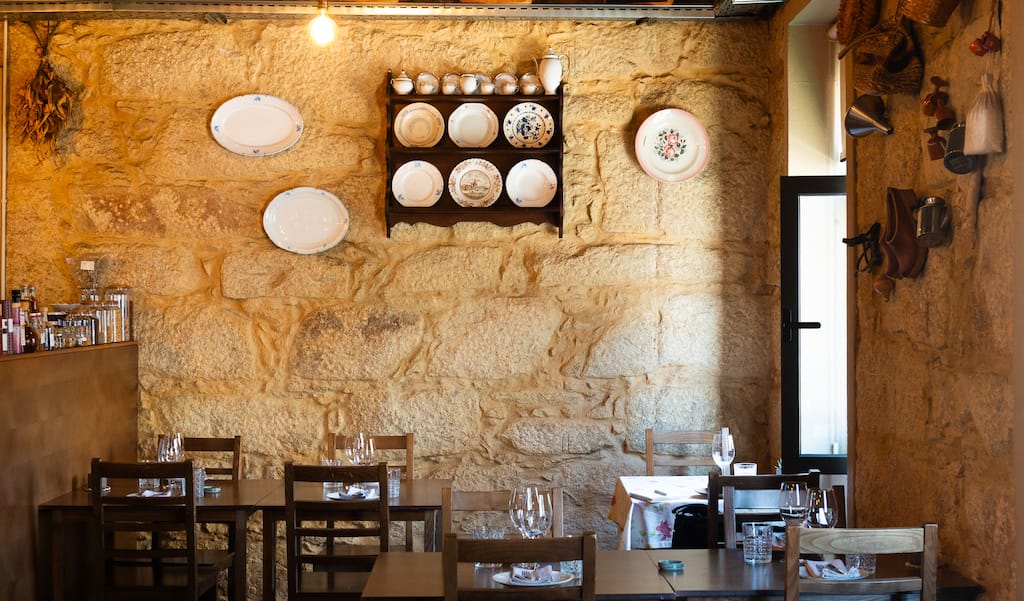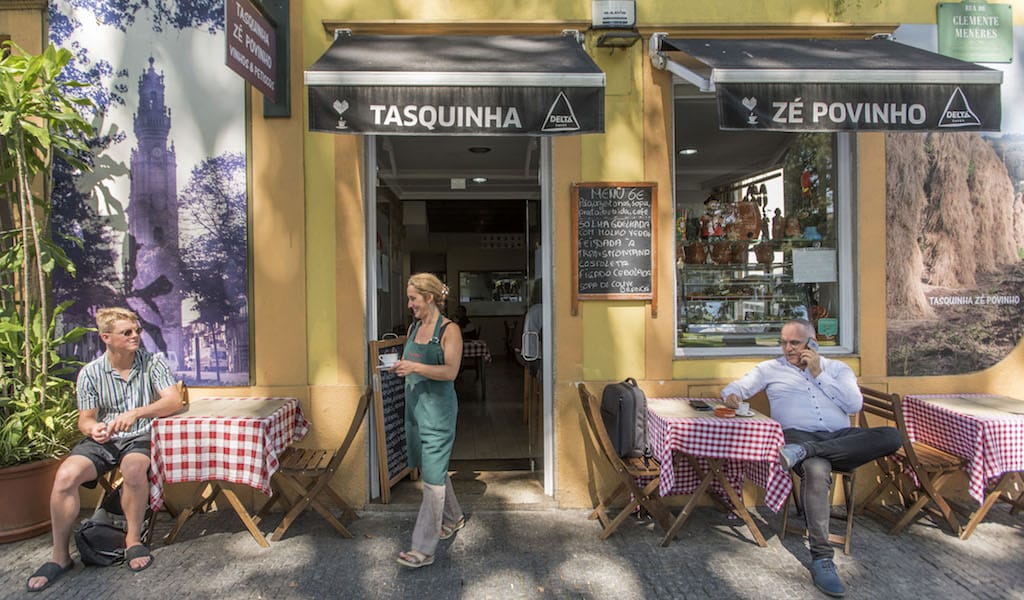When we arrived, there were one or two customers quietly drinking wine at the bar. Later, a man entered and bought cured ham by the kilo, complaining about how much fat it contained. A food tour stopped by, filling the silence with English-language explanation. A bit later, the mailman stuck his head in; he had no letters to deliver, but it was clear that he was angling for a drink.
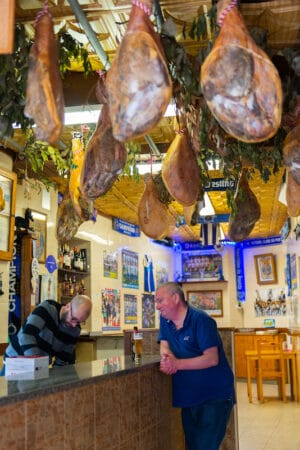
The clientele that late morning at Casa Louro, a bar and restaurant in Porto, seemed to be a microcosm of the city’s life. Indeed, with hams hanging from the ceiling, soccer paraphernalia on the walls, and crusty old customers, it looks like the quintessential Portuguese bar. And in many ways it is, but Casa Louro is also something of a dying breed.
“There used to be many places like this in Porto, but not anymore,” explains Paulo Nogueira, who along with his father, owns the bar. “They’re hard to find.”
The venue Paulo is describing is a type of northern institution that exists somewhere between a bar and a restaurant. In terms of the latter, this means a short menu of rustic bites with an emphasis on cured ham. Several legs hang from the ceiling at Casa Louro, bordered by the eponymous bay leaves, and the day we stop by, António, Paulo’s father, had pulled one down and was busy slicing it by hand. The hams are from Chaves, in Portugal’s far north, and are indicative of the style of curing in that region.
“The hams in the north aren’t smoked,” Paulo tells us. “They’re cured in cold air. Smoked hams have a stronger flavor; this style of ham is milder, subtler.”

He hands over a slice on a toothpick. It tastes of umami but with less salt than other versions we’ve tasted. It has a pink color and a tender texture with a more “raw” mouthfeel, a characteristic exacerbated by the relatively thick slices.
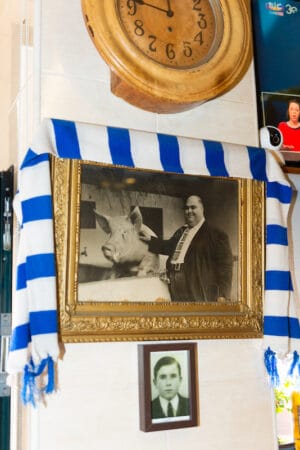
“Cured ham has always been part of the restaurant, from the beginning. Did you see the photo of the original owner and the pig?” asks Paulo, who gestures at a framed photograph of an immensely portly man posing near a likewise pig. This is António Alves de Sousa, Casa Louro’s original owner, who is thought to have opened the bar around 90 years ago. Paulo’s father started working there as a teenager, in 1967, and today he and his son run it together.
Paulo pairs our ham with slices of broa de Avintes, an almost comically dense bread made just outside Porto that blends corn and rye flour.
“Broa de Avintes is sweet, and it makes a nice contrast with the salty cured ham,” Paulo tells us as he gathers the fat and cuttings leftover from his father’s work, takes them outside and feeds them to the seagulls – a daily ritual at Casa Louro.
The brief menu also includes battered and deep-fried sardines, salt cod cakes, soup and bifanas, Porto’s beloved sandwich of braised pork. The latter, served in a rich, pleasantly oily, practically curry-like sauce that boasts a generous pinch of cumin, is unlike any version we’ve encountered in Portugal, and transports us to a vindaloo we ate in Goa, India.
“It’s really unique,” Paulo tells us. “There’s not another one like it. It’s my mother’s recipe.”
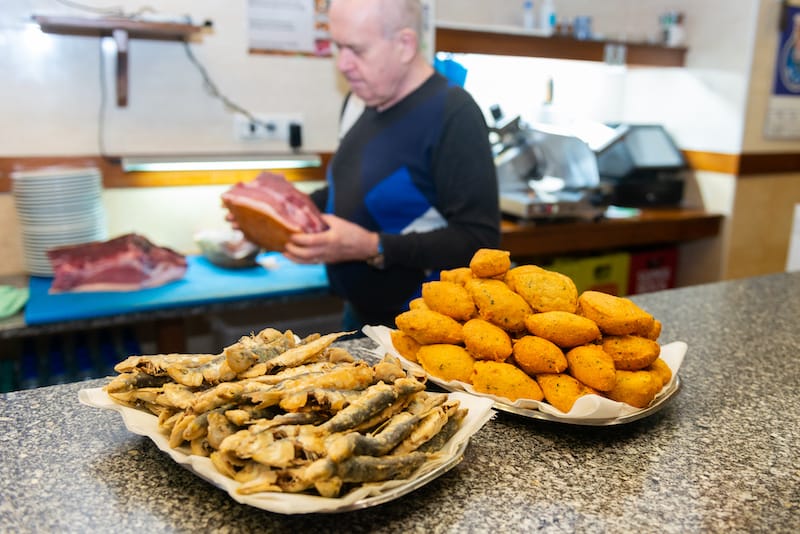
Casa Louro is fundamentally a bar, and serves the spectrum of Portuguese drinks. Locals pop in and sip wine from tiny glasses while standing at the bar. A worker orders a fino, Porto’s term for a small, slim glass of beer. A tour guide orders a glass of sweet moscatel from Favaios. We opt for vinho verde tinto, inky young red wine that Paulo tells us is from Mondim de Basto, a village located 100 kilometers northeast of Porto. He grabs a white plastic container meant to resemble a wicker coated jug and fills a small, white ceramic bowl.
“These cups are a tradition in the north,” Paulo says of the unique drinking vessel. “Some people call them gelas, other malgas or malaguinhas. We use them out of tradition. But tourists also find it fun to drink from a malaguinha.”
We ask Paulo about tourists, and he says that he estimates that 60 percent to 70 percent of his clientele are foreign these days. “But we don’t change anything to accommodate them,” he adds, definitively. And it struck us that this – leaning into one’s traditions, rather than going in the opposite direction – is one way to survive in the new post-tourism Portugal.
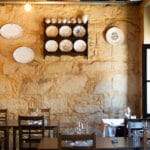 September 11, 2023 Stramuntana: Northern Exposure
September 11, 2023 Stramuntana: Northern Exposure
It’s a warm summer day, yet inside Stramuntana, a restaurant in Porto devoted to the […] Posted in Porto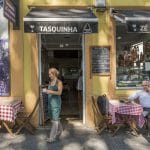 October 4, 2021 Tasquinha Zé Povinho
October 4, 2021 Tasquinha Zé Povinho
When the late 19th-century Portuguese artist and cartoonist Rafael Bordalo Pinheiro […] Posted in Porto July 14, 2021 Cocina Margarita
July 14, 2021 Cocina Margarita
In Mexico City, we love our quick doses of Vitamin T: tacos, tortas and tamales. But […] Posted in Mexico City
Austin BushAustin Bush
Published on June 12, 2023
Related stories
September 11, 2023
PortoIt’s a warm summer day, yet inside Stramuntana, a restaurant in Porto devoted to the cooking of Portugal’s northern Trás-os-Montes region, a hearth is blazing. “In the past, people in Trás-os-Montes used wood-burning ovens all year,” says Lídia Brás, Stramuntana’s co-chef and co-owner, when we express our surprise in seeing a fireplace in operation during…
October 4, 2021
PortoWhen the late 19th-century Portuguese artist and cartoonist Rafael Bordalo Pinheiro wanted to create a vehicle through which to mock and criticize the country’s powerful elite, he settled upon the character Zé Povinho, an unsophisticated country laborer who served as a stand-in for the average citizen. While some Portuguese people took umbrage with their country’s…
July 14, 2021
Mexico CityIn Mexico City, we love our quick doses of Vitamin T: tacos, tortas and tamales. But what to do when we are itching to sit down for a hearty lunch (the most important meal of the day for many Mexicans), and don’t have the time or energy to rush to and from home in the…















































